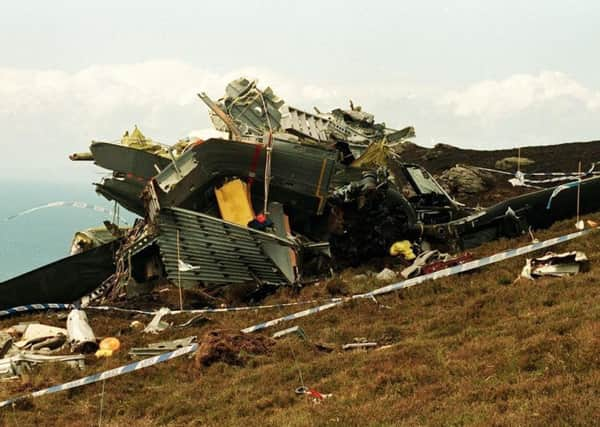Declassified files: Just one thin file, with pages removed, on Mull of Kintyre Chinook crash


Although a series of investigations have ruled out foul play or a cover-up, the crash has always been the subject of conspiracy theories, particularly because almost all of the senior intelligence experts working on Northern Ireland had been allowed to fly on one aircraft.
Most of the files relating to the June 2 1994 tragedy in which 29 people died will be held by the Ministry of Defence and will not be released in Belfast.
Advertisement
Hide AdAdvertisement
Hide AdHowever, given the significance of the crash to Northern Ireland there is a surprisingly little reference to the issue in the files which have been released – although files may be released late in coming years.
Just one thin file has been released at the Public Record Office in Belfast. From it, several pages have been removed and will remain closed to the public until 2094.
Those pages have been removed under exemptions in the Freedom of Information Act which relate to communications with senior Royals or the Royal Household, personal information and information provided in confidence.
The file contains the government’s ‘lines to take’ – a standard agreed narrative from which ministers and civil servants answer questions about a significant issue. It described the crash as “a tragic accident” which resulted in “a huge loss of extremely dedicated and outstanding people from the Royal Ulster Constabulary, the Army, the Royal Air Force and the Northern Ireland Office”.
Advertisement
Hide AdAdvertisement
Hide AdIn response to the question, ‘why were so many important people travelling together on one aircraft, the document said: “This was not an unusual flight in RAF terms, in an aircraft which has a long-established reputation as a safe and secure means of transport, widely used in Northern Ireland.
“The flight path did not traverse hostile country, and the aircraft was en route from one secure base to another.
“The use of a single helicopter represented no departure from standard practice.”
The document added that “there is no evidence of sabotage”.
It admitted that the deaths were “a blow to our efforts to combat terrorism but the operational effects will certainly be overcome”.
Advertisement
Hide AdAdvertisement
Hide AdA June 9 1994 message from the British Embassy in Dublin informed the NIO, the Foreign Office and the RUC that south of the border “press coverage has been wide and sympathetic”.
The message from British Ambassador to Dublin Sir David Blatherwick also relayed public expressions of sympathy and support from the taoiseach, tanaiste and the Garda commissioner and added: “A few years ago we could have expected an embarrassed silence from the Irish at such a disaster involving acknowledged members of the intelligence community.
“These public reactions illustrate the change in attitudes towards security cooperation.”